INTERNATIONAL: Cape-to-Cairo dream still bubbling away
by Colin Anthony,
2014-11-20 07:01:50.0
AN IMPORTANT BUT difficult initiative to boost intra-African trade is a free trade zone from the Cape to Cairo, a dream started by Cecil John Rhodes and rejuvenated by post-Apartheid South Africa’s reintegration into the global economy.
In 2008 the leaders of three African trading blocs signed an agreement to create a free trade zone of 26 countries, with a GDP estimated then at $624bn.
The three trade blocs, the Southern African Development Community (SADC), the East African Community (EAC) and the Common Market for Eastern and Southern Africa (Comesa), pledged also to promote joint infrastructure and energy projects.
Unfortunately little concrete progress has been made, with the trading blocs more focused on integrating their own member countries and easing obstacles to cross-border transactions.
However, it is an ambitious plan and still on track. In 2011, African leaders meeting in Johannesburg undertook to continue negotiations, and a year later the concept was extended to include three other African trade blocs: the Economic Community of West African States (Ecowas), the Economic Community of Central African States (ECCAS) and the Arab Maghreb Union, which incorporates north African countries.
The trade bloc will build on three pillars: market integration, infrastructure expansion and industrial development. The formal negotiating process established an institutional framework and process to be followed, including that the negotiations would be conducted in two phases. The first phase covers trade in goods (including such things as tariff liberalisation, customs co-operation, non-tariff barriers and other technical barriers to trade). The second phase will cover trade-related issues (including intellectual property rights, competition policy and trade development).
Keeping the idea bubbling is the Africa Free Zones Association, an international non-profit organisation established in Cape Town in 2004. Its goal is to promote African competitiveness by encouraging best-practice operations in manufacturing, which will help in attracting foreign direct investment. It also prioritises anti-poverty measures, creating decent jobs and enhancing income-generation through free trade zones.
The zone’s main objective will be to stimulate intra-African trade, which the UN Commission for Africa estimates at being between 10% and 12% of total African trade, according to the International Centre for Trade and Sustainable Development.
Support for a continent-wide free trade zone is a key part of the NDP, as is promoting trade with other African countries. With sub-Saharan African averaging GDP growth of more than 5% — easily outstripping the global average — the advantages for SA are obvious.
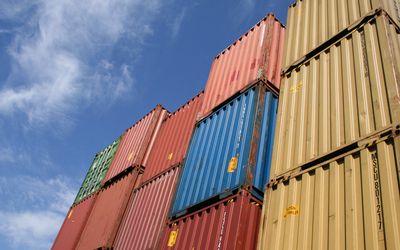
Picture: THINKSTOCK
AN IMPORTANT BUT difficult initiative to boost intra-African trade is a free trade zone from the Cape to Cairo, a dream started by Cecil John Rhodes and rejuvenated by post-Apartheid South Africa’s reintegration into the global economy.
In 2008 the leaders of three African trading blocs signed an agreement to create a free trade zone of 26 countries, with a GDP estimated then at $624bn.
The three trade blocs, the Southern African Development Community (SADC), the East African Community (EAC) and the Common Market for Eastern and Southern Africa (Comesa), pledged also to promote joint infrastructure and energy projects.
Unfortunately little concrete progress has been made, with the trading blocs more focused on integrating their own member countries and easing obstacles to cross-border transactions.
However, it is an ambitious plan and still on track. In 2011, African leaders meeting in Johannesburg undertook to continue negotiations, and a year later the concept was extended to include three other African trade blocs: the Economic Community of West African States (Ecowas), the Economic Community of Central African States (ECCAS) and the Arab Maghreb Union, which incorporates north African countries.
The trade bloc will build on three pillars: market integration, infrastructure expansion and industrial development. The formal negotiating process established an institutional framework and process to be followed, including that the negotiations would be conducted in two phases. The first phase covers trade in goods (including such things as tariff liberalisation, customs co-operation, non-tariff barriers and other technical barriers to trade). The second phase will cover trade-related issues (including intellectual property rights, competition policy and trade development).
Keeping the idea bubbling is the Africa Free Zones Association, an international non-profit organisation established in Cape Town in 2004. Its goal is to promote African competitiveness by encouraging best-practice operations in manufacturing, which will help in attracting foreign direct investment. It also prioritises anti-poverty measures, creating decent jobs and enhancing income-generation through free trade zones.
The zone’s main objective will be to stimulate intra-African trade, which the UN Commission for Africa estimates at being between 10% and 12% of total African trade, according to the International Centre for Trade and Sustainable Development.
Support for a continent-wide free trade zone is a key part of the NDP, as is promoting trade with other African countries. With sub-Saharan African averaging GDP growth of more than 5% — easily outstripping the global average — the advantages for SA are obvious.




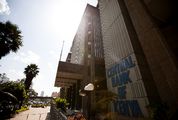
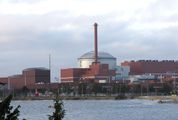


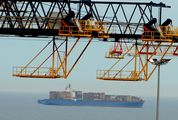
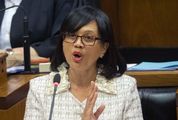
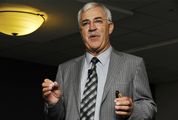









Change: -0.47%
Change: -0.61%
Change: 0.53%
Change: -0.42%
Change: -2.12%
Data supplied by Profile Data
Change: -0.46%
Change: -0.15%
Change: -0.47%
Change: 0.00%
Change: -0.20%
Data supplied by Profile Data
Change: -1.03%
Change: -1.18%
Change: -0.73%
Change: -1.36%
Change: -1.13%
Data supplied by Profile Data
Change: 0.63%
Change: 1.46%
Change: 1.45%
Change: 0.00%
Change: 0.89%
Data supplied by Profile Data